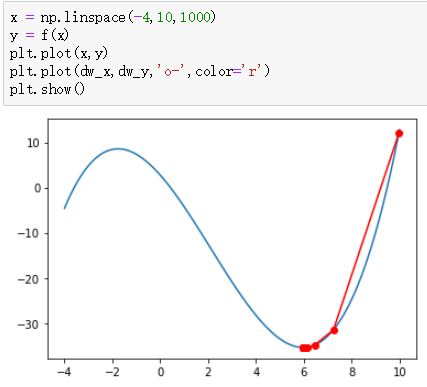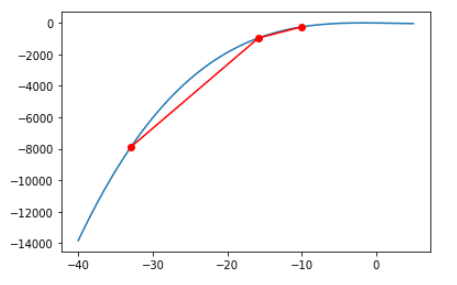函数的随机梯度下降(固定函数与自定义函数随机梯度下降)
1. 基于python实现随机梯度下降
import matplotlib.pyplot as plt
import numpy as np
def f(x):
"""构造函数"""
#print("calculating f(x) {}".format(x))
return 0.19 * x*x*x - 1.2 * (x*x) - 6 * x + 2.76
def g(x):
"""导数"""
return 0.57 * x * x - 2.4 * x - 6
def autoGD(init_x, lr, thresh, epoch):
x = init_x
draw_x,draw_y = [],[]
for i in range(epoch):
grad = g(x)
x = x - lr * grad
print("Epoch {}: x={:.5f} grad={} y={}".format(i,x,grad,f(x)))
if i % 200 == 0:
draw_x.append(x)
draw_y.append(f(x))
if abs(grad) < thresh:
break
return draw_x,draw_y


2. 根据输入的任意函数进行随机梯度下降
主要是使用sympy库,具体方法请查看sympy库的API
import numpy as np
import matplotlib.pyplot as plt
import sympy
from sympy import S, Symbol
def f(exp,x):
return exp.evalf(subs={a:x})
def g(exp,x):
return sympy.diff(exp,a).evalf(subs={a:x})
def sgd(exp,init_x,lr,thresh,epoch):
x = init_x
for i in range(epoch):
grad = g(exp,x)
x -= grad * lr
print("[Epoch : {}] x : {} grad : {}".format(i,x,grad))
if abs(grad) < thresh:
break
def draw(exp,begin,end):
x = np.linspace(begin,end,100)
y = []
for ix in x:
iy = exp.evalf(subs={a:ix})
y.append(iy)
plt.plot(x,y)
plt.show()
def main():
a = input('请输入变量:')
b = input('请使用以上变量进行函数式子的表达:')
a = Symbol(a)
exp = S(b)
draw(exp,-5,5)
sgd(exp,random.randint(0,10),1e-2,1e-3,200)
if __name__ == "__main__":
main()

代码改变世界


 浙公网安备 33010602011771号
浙公网安备 33010602011771号